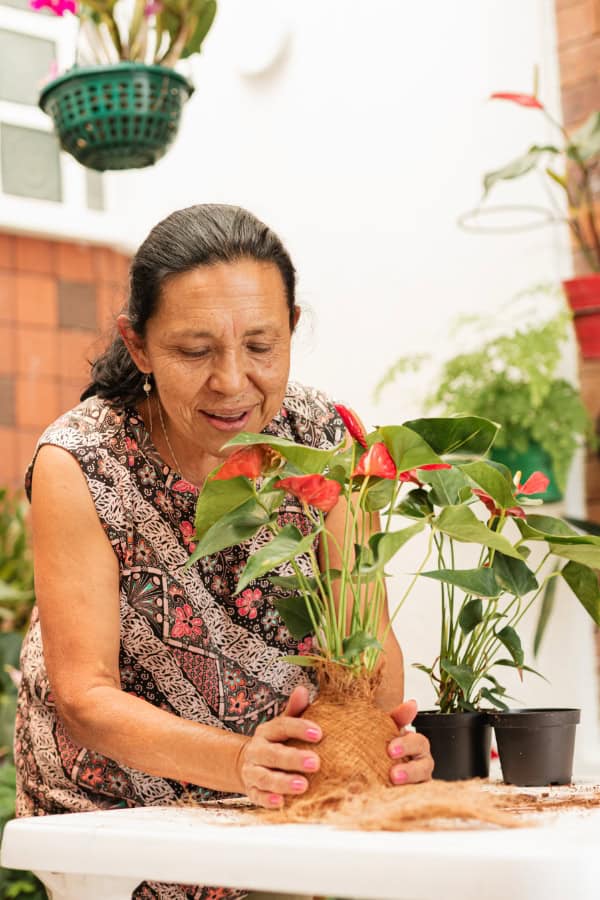Hospice Care for Lung Disease
Care Services
When Is the Right Time to Consider Hospice for Lung Disease or COPD? Deciding when to transition to hospice care…















When Is the Right Time to Consider Hospice for Lung Disease or COPD?
Deciding when to transition to hospice care can be challenging, but early intervention can significantly improve the quality of life for both patients and their families. Recognizing the right time to consider hospice ensures that patients receive the compassionate support they need during the most critical stages of their illness.
Consider hospice care when:
- Frequent hospitalizations or emergency visits occur due to lung disease complications.
- Symptoms such as shortness of breath, fatigue, or chronic coughing worsen despite treatment.
- The patient’s prognosis is six months or less if the disease follows its natural course.
- The focus shifts from curing the disease to managing symptoms and enhancing comfort.
What Can Hospice Do for a Patient with End-Stage Lung Disease or COPD?
Hospice care for lung disease is dedicated to alleviating symptoms, improving quality of life, and providing unwavering support to patients navigating the challenges of advanced illness. By focusing on comfort and compassionate care, hospice ensures that patients can spend their remaining time in peace and dignity.
Hospice care provides:
- Symptom Management: Medications, oxygen therapy, and other interventions to relieve shortness of breath, chest pain, and fatigue.
- Emotional Support: Counseling to reduce anxiety, depression, and fear often associated with breathing difficulties.
- Holistic Care: Assistance with daily activities, spiritual guidance, and personalized care plans tailored to each patient’s needs.
How Can Hospice Help the Family of a Patient with Lung Disease?
Hospice care extends its compassionate support beyond the patient to encompass the families who play a crucial role in caregiving. Understanding how hospice can assist families ensures that caregivers receive the necessary resources and support to manage their responsibilities and maintain their own well-being.
Families receive:
- Education on managing symptoms and understanding disease progression.
- Emotional Support through counseling and support groups.
- Respite Care to give caregivers time to rest and recharge.
- Bereavement Support to help families cope after their loved one’s passing.
Types of Chronic Lung Disease That May Warrant Hospice Care
Hospice care is appropriate for a range of chronic lung diseases when symptoms become severe and life expectancy is limited. Understanding which conditions qualify for hospice ensures that patients receive the specialized care they need to maintain comfort and dignity.
Conditions include:
- Chronic Obstructive Pulmonary Disease (COPD)
- Pulmonary fibrosis
- Interstitial lung disease
- Severe asthma
- Lung cancer
Hospice Eligibility Guidelines for COPD and Lung Disease
Determining hospice eligibility for patients with advanced lung disease or COPD involves assessing specific medical criteria and evaluating the patient’s overall health and prognosis. Understanding these guidelines ensures that eligible patients receive the compassionate care they need during their final stages of life.
Eligibility guidelines include:
- A diagnosis of end-stage lung disease with a prognosis of six months or less.
- Frequent hospitalizations or ER visits for respiratory failure or complications.
- Dependence on oxygen therapy at rest.
- Inability to perform basic activities of daily living.
- Significant weight loss or muscle wasting due to the disease.
Hospice Decisions for Patients with Advanced Lung Disease
Deciding to enter hospice care is a deeply personal and often challenging decision for patients with advanced lung disease and their families. This choice allows individuals to focus on comfort and meaningful moments during the time that remains, ensuring a dignified and peaceful end-of-life experience.
Steps to consider:
- Consult with your physician about prognosis and care options.
- Evaluate the patient’s symptoms and their impact on daily life.
- Discuss goals of care and preferences with family members and the hospice team.
COPD Palliative Care Recommendations
Palliative care is essential for managing the chronic symptoms of COPD and other advanced lung diseases, providing relief and enhancing the quality of life for patients and their families. These recommendations help patients navigate the complexities of their condition while maintaining as much independence and comfort as possible.
Recommendations include:
- Using medications to manage breathlessness, anxiety, and chronic cough.
- Oxygen therapy to improve breathing and reduce discomfort.
- Pulmonary rehabilitation exercises to maintain lung function and mobility.
- Emotional and psychological support for patients and families.
When Should Palliative Care in End-Stage COPD Be Started?
Initiating palliative care at the appropriate time is crucial for patients with end-stage COPD, ensuring that they receive the necessary relief and support to maintain their quality of life. Starting palliative care early can prevent unnecessary suffering and provide a framework for comprehensive care, even if curative treatments are still being pursued.
Signs it’s time for palliative care:
- Persistent shortness of breath or fatigue that limits daily activities.
- Frequent exacerbations or hospitalizations.
- Anxiety or depression related to the illness.
What Palliative Care Means for COPD and Other Lung Diseases
Palliative care is a comprehensive approach to managing the symptoms of COPD and other advanced lung diseases, focusing on enhancing the patient’s quality of life by relieving discomfort and addressing emotional, spiritual, and practical needs. This approach complements curative treatments, ensuring that patients receive holistic care at every stage of their illness.
Palliative care provides:
- Relief from physical symptoms, such as pain and breathlessness.
- Counseling to help patients and families cope with the emotional impact of lung disease.
- Assistance with advance care planning and decision-making.
How COPD Hospice Care Can Help Ease Symptoms
Hospice care for COPD is dedicated to providing comprehensive support that goes beyond merely managing physical symptoms. By focusing on easing breathlessness, reducing discomfort, and addressing the emotional and psychological challenges associated with advanced COPD, hospice ensures that patients can experience a higher quality of life during their remaining days.
How hospice helps:
- Breathlessness: Medications, oxygen therapy, and relaxation techniques to improve airflow and reduce anxiety.
- Chronic Cough: Treatments to soothe irritation and reduce coughing fits.
- Pain Management: Relief from chest pain or muscle aches caused by labored breathing.
- Anxiety Relief: Counseling and medications to address anxiety and panic attacks often triggered by breathing difficulties.